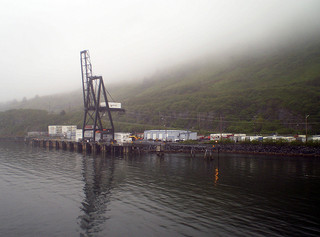 Although the idle fleet will rise in February due to the Chinese New Year, further service withdrawals are unlikely as ocean carriers are determined not to relinquish market share to the double threat of the P3 alliance and expansion of the G6 alliance.
Although the idle fleet will rise in February due to the Chinese New Year, further service withdrawals are unlikely as ocean carriers are determined not to relinquish market share to the double threat of the P3 alliance and expansion of the G6 alliance.
According to Drewry Maritime Research, the number of vessels laid up is increasing, but far fewer have been taken out of service compared to a year ago, indicating that carriers prefer to cancel sailings rather than withdraw whole services, particularly involving ships of over 8,000 TEUs (20-foot-equivalent units).
Drewry’s latest data show that 175 vessels with a combined capacity of 516,800 TEUs lay idled in mid-January this year, accounting for 3 percent of current capacity, compared to only 152 vessels offering a capacity of 239,000 TEUs in September.
The growth mainly came from ships with capacities of 3,000-5,000 TEUs and 5,000-8,000 TEUs.
Oversupply is partly responsible, said Drewry, as 74 vessels between 3,000 TEUs and 8,000 TEUs joined the fleet during 2013 compared to 58 in 2012.
Another contributing factor is the withdrawal of five trans-Pacific services between September and November, after the peak season, compared to none a year earlier.
On the other hand, only 165 vessels offering a capacity of 471,000 TEUs were laid up in December 2013, compared to about 290 vessels offering 800,000 TEUs a year earlier. Idling activity has been pretty static throughout 2013, a trend that has changed little since the beginning of the winter period, even though global demand remains relatively weak.
“It cannot be attributed to a considerable improvement in demand, and is probably more related to the fact that freight rates still have a long way to fall to get back to the lows of 2009/10,” continued Drewry.
Moreover, the ships that really need to be laid up are deployed on the Asia-North Europe trade lane, where the average size of vessel is now over 10,500 TEUs. In the 2012 winter season, three whole services were withdrawn from the route compared to none this year, even though westbound cargo growth in the first 11 months of 2013 was only 2 percent.
The formation of the P3 alliance and expansion of the G6 alliance into the trans-Pacific and trans-Atlantic trade lanes are also affecting lay-ups, with competitors hesitating about any fleet reduction program that could jeopardize their market share.
In theory, many more vessels should be going into layup as the global fleet capacity growth again outstripped demand in 2013. Altogether, only 187 container ships providing a total capacity of 428,800 TEUs were demolished against 213 deliveries offering 1.4 million TEUs.
For deliveries scheduled in 2014, massive capacity additions for the segments 3,000 TEUs-5,000 TEUs and 5,000-8,000 TEUs are again likely to worsen the oversupply. More vessels in these ranges are expected to be laid up, but demolitions in the larger sizes are not expected to rise.
Photo: jkbrooks85




